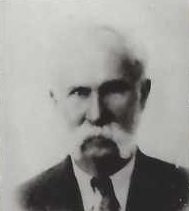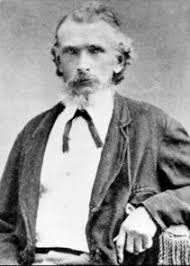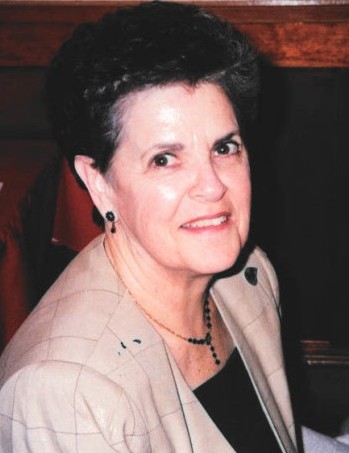Andrew Andersen
1851 -1938
Andrew Andersen was the third child and oldest son of the ten children of Hans and Maren Jensen Andersen. He was born October 24, 1851, in Bredstrup, Odense, Denmark. The farm that Hans and Maren owned in
Bredstrup consisted of seventy “Tinner” of land (a tinner of land is a little less than an acre). The farm offered plenty of work for all of this hard-working, thrifty, and industrious, well-to-do family. They raised rye and barley and kept on an average of ten or twelve cows, six teams of horses, twenty sheep and a flock of geese.
The mother, Maren Jensen, was the daughter of the “Honest Miller ,” so called because his mill had ground the flour for the previous generations.
School for the children came every other day. One day, they would recite lessons and receive assignments. The next day was spent at home where the lessons were studied and the assignments prepared for the
following day at school.
One day two strangers called at the Andersens’ and asked them to listen to the message they had traveled so far to bring. The strangers were invited in and given something to eat and a room in which to sleep. They were Mormon Elders. Hans and Maren listened to what they had to say.
They were greatly impressed by the Gospel message but were not ready to accept it. From that time on, however, every Elder that came to the island of Eunen was a guest at the Andersen home. Among those that came were Jesse N. Smith, William. W. Cluss, Charles C. Rich, H. K. Brown and Amasa Lyman.
One day, Andrew, the oldest boy, was kicked in the head by a horse. His skull was crushed so badly that the doctors said he could not live. Hans went into the woods nearby and prayed. He asked the lord to heal his son and give him the wisdom to know and the courage to accept the truth. He promised that if his child would live that he would give of his time and his property to the up-building of the Church. When he returned, his son was much improved and with the administration of the Elders, made a rapid recovery.
This was a strong testimony to the family of the truthfulness of the words of the Elders and Hans never forgot to live up to his promise.
On March 13, 1861, Elder K. H. Brown baptized Hans and Maren and their son Andrew and confirmed them members of The Church of Jesus Christ of latter-day Saints. This step greatly influenced the life of Hans
Andersen and his family. They who could boast of never having had an enemy were now often ridiculed.
Home in Denmark had lost much of its pleasantness. They decided that the very best thing to do was to go to Zion in America. They sold what they had and prepared to go to Utah, home of the Mormons. Hans, from the generosity of his heart, offered to take with him those of his hired help who had accepted the new religion. All together the group numbered fifteen. The strings on his big purse had to be pulled open very often and very regularly.
On April 18, 1863, they left Denmark and started for Utah to be gathered with the Saints. On April 30, 1863, they sailed from Liverpool, England, on the ship along with 766 Saints who were traveling under the direction of William W. Cluff. Four people died on the way, but the John J. Boyd arrived safely with its precious cargo of souls in New York Harbor Sunday, June 1, 1863. Although the Civil War was in progress at the time, immediately they took the train for the West and arrived in Florence, Nebraska on June 18. Their journey by rail was more pleasant. An old conductor, who claimed to have been acquainted with the Prophet Joseph Smith, was kind enough to stop the train when they arrived at Palmyra, New York, where the Prophet first began his remarkable career. He showed them the house where the Prophet lived, the woods in which he received heavenly visions, and the Hill Cumorah where he obtained the Book of Mormon plates. This information went like wildfire from car to car and all who possibly could do so got out to have a view of the historic places and to pluck a flower from the locality as a memento to carry with them.
They arrived in Salt Lake Valley on September 12, 1863. A great many of the immigrants stayed there but many others went south. Hans felt impelled to go north. He selected Cache Valley as his home and, prompted by his generosity and guided by his promise to the Lord that he would do all in his power for the upbuilding of His Church and Kingdom, he at once looked for the valley’s greatest needs and began, so far as he was able, to supply them. He built the first sawmill in Logan Canyon. It was the first mill in the northern settlements to be equipped with a circle saw. He bought and brought into the valley its first threshing machine. He saw the need of a better flour mill and proceeded to spend some twelve hundred dollars for machinery and bolting cloth for such a mill. All this equipment he had freighted across the plains and brought to a point near where Hyrum Dam was constructed.
Any immigrants arriving in the valley knew that he could care for them until they were able to provide for themselves. On May 18, 1877, President Brigham Young came to dedicate the Logan Temple site and gave the people just seven years to complete the temple. A great deal of Hans’ time and labor and money went into this building. It was completed and dedicated the day before seven years were up.
Andrew was ten years old when his family settled in Logan. On a farm nearby lived Janet Henderson. She was one of the large family of children that belonged to Robert and Mary Ross Henderson. She had emigrated from Scotland. This was the girl that caught and held first the eye and then the heart of Andrew. They were married in the Salt Lake Endowment House on October 11, 1875.
In February of 1876, Andrew Andersen received a call from the President of the Church, Brigham Young, to go south and help settle the Territory of Arizona. It was necessary that they begin their journey on sleighs. The snow was so deep that they were forced to unhitch a team from one sleigh and use it to help another team draw its load up the hill. Then both teams were unhitched and taken back to the other sleigh.
Traveling this way was naturally very slow and tiresome. It took thirteen weeks to go from Logan to Obed on the Little Colorado. The last part of the journey, from Brigham City, Arizona, was traveled in wagons. Janet was so ill that their wagon had to turn out to the side of the road occasionally. There were about two hundred in the company consisting of forty families and some single men.
They carried with them all the provisions they could. People along the way generously gave them food for their stock. They crossed the big Colorado at Lee’s Ferry. When they came to the Little Colorado, they piled their things to the tops of their water barrels to keep them dry as possible and then floated the teams and wagons across.
At Obed, on the Little Colorado, they built a rock fort. The houses within were also built of rock as the slabs of rock were about two inches thick and four or five feet square and could be taken from the ground almost everywhere. A spring of clear water flowed nearby. Andrew, as did other men, had a small farm near the fort. It was here on Janet’s nineteenth birthday, July 19, 1876, that a child was born to them. A tiny doctor book for medical adv ice, inexperienced Mary, a sister, for nursemaid, and Andrew as doctor were all the help they had.
The settlers had a very hard time of it. They soon found that the ground refused to produce any crops and that the water gave them chills and fever. Eighty percent of the company returned to Utah. Andrew refused to leave what he considered his mission. In the fall, however, after the rest had gone, he moved his family over to Brigham City, Arizona, not far from Obed, where another group were living the United Order. He soon was given charge of the company’s garden at which he did very well and they were happy in their new home. They were honest and industrious and were soon given particular work in the “Order.” Andrew was asked to make the bread for the whole group. He had never done anything quite like that in all his life, but soon learned to make and bake very fine bread.
In 1883, Andrew married Missylvia Curtis. From then on his lot was cast with the polygamists and persecution came to him as it did to others. Laws were passed in the United States prohibiting polygamy which added to their trials. Sylvia gave birth to a son, Moses Monroe, and shortly afterward Andrew decided the only thing to do was to seek another home where they might have freedom to live as the one family that they were.
They arrived at Corralitos, Chihuahua, Mexico, in the spring of 1886, and lived with several other families in an old, almost tumbled-down mill. There was scarcely more than one room to a family and a quilt usually partitioned them. They rented land from Munos, the superintendent of the mines, and stayed a little more than two years, then they moved to Colonia Diaz where life was more comfortable. At best, however, it was far from being easy. Proper foods were scarce and sickness plentiful. Doctors were not to be found and they helped each other the best they could.
On January 24, 1890, Sylvia’s third child, a girl, was born. She lived less than a week. Everyone in’ the family took the grippe except Sylvia and she tried to wait on and care for all. But she was not strong enough. The dread disease soon fastened itself on her and she died February 6, 1890. Janet took her two little boys and cared for them, many people say, even more carefully than she did her own. The boys themselves say their own mother could not have been better to them. Janet named her next baby, a girl 1, for Sylvia. This shows conclusively how much the two women cared for each other and how well they practiced the law which was given them.
Three miles south from Diaz ran a river that often overflowed its banks. Andrew and Charles Whiting were at the head of a committee to keep a levee between the river and their homes. During high water Andrew never left his post of duty or failed in what was expected of him.
Mexicans always presented a problem to the settlers. Andrew believed as did Brigham Young about the Indians and was rewarded because of his kindness to them. One night two Mexicans stopped and demanded supper.
They were fed and kindly treated. Soon they left and went to the town of Ascension, where they killed several people. Another time, the Mexicans stole a very choice horse belonging to Andrew. His neighbors wanted him to hunt and kill the thief, but Andrew said he would rather lose the animal. Shortly afterwards, it got loose, ran away from the Mexicans and returned home.
During some trouble in which a band of Mexicans were taking what they pleased from the settlers’ store and “holding up” everyone that happened to come up the street, Andrew came by on a load of hay. His horses got frightened and began to run. It so irritated one of the men to see the Mexicans so torment a man, who was much loved and respected by all, that he went up to the Mexican gang leader, put his gun in his stomach and said,—- you: If you make a move to try to have your men protect you, I’ll put every bullet in your carcass before I fall, and YOU’LL be the last guy to leave here, too.” The ruse worked. The gang jumped on their horses and hurried away. When the last rider was lost behind a turn in the road, the leader was allowed, to his relief, to go.
Andrew and Janet were good “neighbors.” Many hours were spent with the sick. At one time, although Janet was sick herself, she was impressed to go see a sick family. They found a little girl “laid out” white and still, with but a sheet over her, and the family mourning her death. But the impression came to Janet that it was not time for her to die and asked for warm blankets to wrap her in. After working with her for a short time, she revived, and years later became the mother of a large family.
Because of Andrew’s great family and sympathy, he was asked to help at many first birthdays and for the first twenty years of Colonia Diaz he did most of the baptisms and so was present at not only most of the births, but the “rebirths” as well.
Grandpa Andrew Andersen traveled hundreds of miles as a Ward Teacher. His first “beat” covered forty miles. He went on a horse usually, other times in a wagon when Janet went with him. Everybody loved them. Andrew was a member of the Prayer Circle which was held every Sunday School. The clothing they wore at that time happened to be taken home by Andrew and was not left in Mexico at the time of the Exodus.
The education of Grandpa Andersen after he was ten years old was acquired by himself. He developed and trained his mind to act quickly and wisely, and his memory to serve him well which it did all of his long life. In those early pioneering days of Old Mexico whenever accurate work in big figures of measuring hay or water was needed they went to Grandpa who always did it in his head without paper or pencil.
Andrew Andersen was gifted in music and was a great singer. This he bequeathed to his family. He especially loved Eliza R. Snow’s Hymn “O My Father” and the song “O My Mother.”
The Mexican Government was friendly to the colonists, but the rebels and roving bands of Mexican bandits continually made trouble. It got so bad that finally the Church Authorities advised the people to leave Mexico.
July 28, 1912 a runner from Colonia Dublan arrived in Colonia Diaz with instructions that all the people of the colony were to leave by 10:00 a.m. that morning for the United States, as the bandits were threatening to disarm the colonists.
The Andersens went with others, three small families in one of Grandpa’s wagons. All camped at Hachita, New Mexico under protection of the United States, until each went his own way. Andrew took his family to Deming then to Virden, New Mexico on the Gila River in 1917, where they became the most beloved of the old folks there. Near them lived Hans, Bertha, Mary C. (Aunt Mamie), and families, and not far away lived the other six. The other two always kept busy and happy helping others and living a full life.
Grandma Janet Andersen was ill for several years before her death on April 24, 1936, which partly prepared her dear companion for his part thereafter. Though very lonely, yet with the faith and patience that characterized his life, he lived each day as he had always done, determined, according to his own words, “to live each day so that I can look back on a well spent day.” Shortly after his eighty-eighth birthday, he became quite weak, told his family he would be with them ten days longer, then gently waited the last few days to join his wives and loved ones which he did on November 12, 1938. Peace to his soul.
Mynoa Richardson Andersen, daughter-in-law
Stalwarts South of the Border, page 16,
Nelle Spilsbury Hatch,



